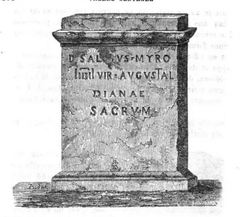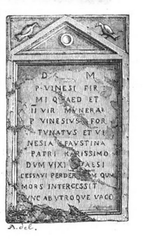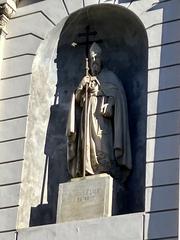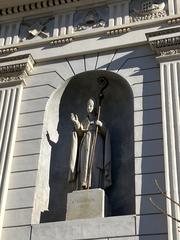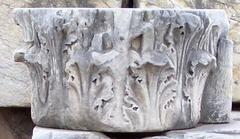
Aosta Cathedral Visiting Hours, Tickets, and Travel Guide
Date: 14/06/2025
Introduction: Discovering Aosta Cathedral
Aosta Cathedral—officially the Cathedral of Santa Maria Assunta e San Giovanni Battista—stands at the spiritual and historic heart of Aosta Valley. With origins extending back to the late 4th century, this monument narrates a story of over 1,600 years of faith, artistic achievement, and architectural evolution. It is a living testament to the region’s transition from Roman Augusta Praetoria Salassorum to a vibrant medieval and modern Alpine city, harmoniously blending Romanesque, Gothic, Renaissance, and Neoclassical features. Today, Aosta Cathedral is not only a place of worship but also a cultural landmark, anchoring the city’s urban landscape and inviting visitors to explore its sacred spaces, artistic treasures, and surrounding historic sites.
This comprehensive guide provides essential information on Aosta Cathedral visiting hours, tickets, accessibility, nearby attractions, and practical tips, ensuring a smooth and memorable experience for every visitor.
For more historical background and up-to-date visitor information, see:
Città e Cattedrali – Aosta Cathedral
Italia.it – Aosta Cathedral
Savoring Italy – Aosta Valley Guide
Table of Contents
- Introduction
- Historical Overview
- Architectural and Artistic Highlights
- Visiting Information
- Nearby Attractions
- Community, Culture, and Events
- FAQs
- Visuals and Media Suggestions
- References
Historical Overview
Early Christian Foundations
Aosta Cathedral traces its roots to the late 4th century, marking the Christianization of Augusta Praetoria Salassorum (Città e Cattedrali). Built near the Roman forum, the original structure was likely modest, serving as a focal point for the emerging Christian community and symbolizing the city’s spiritual transformation (Italia.it).
Romanesque and Medieval Expansion
By the 11th century, growing religious and civic needs prompted a major Romanesque reconstruction. The cathedral acquired its basilica plan: a nave, two aisles, a crypt, and two bell towers (Wikipedia). Skilled artisans decorated the nave with frescoes, fragments of which remain visible, while the crypt, dating to the 9th century, features Lombard and Carolingian capitals (Italia.it).
Gothic, Renaissance, and Neoclassical Transformations
Successive centuries brought Gothic and Renaissance embellishments—stained glass, floor mosaics, and a richly decorated portal—culminating in the 19th-century Neoclassical façade (1846–1848). The cathedral’s layered architecture reflects the city’s complex history and evolving artistic tastes (Italia.it).
Architectural and Artistic Highlights
Exterior Features
The cathedral’s façade is a striking blend of Romanesque robustness and Gothic verticality, topped by twin 12th-century bell towers. Decorative carvings, archivolts, and the use of local stone root the building firmly in the Alpine landscape (Evendo).
Interior Layout and Treasures
- Plan: Latin cross with a spacious nave, aisles, and chapels.
- Frescoes & Mosaics: 11th-century crypt frescoes and 12th-century mosaic floors depict biblical scenes and saints (Italian Genealogy Blog).
- Choir Stalls: 15th-century wooden stalls carved with biblical figures and local motifs.
- Treasury: Houses reliquaries, liturgical vestments, and a renowned 12th-century silver bust of Saint Gratus.
- Chapels & Cloister: Side chapels and the adjacent Romanesque cloister offer serene spaces for prayer and reflection.
Interpretive panels in multiple languages and guided tours provide context for these treasures (Savoring Italy).
Visiting Information
Hours and Tickets
-
Cathedral Opening Hours:
Monday–Saturday: 9:00 AM–6:00 PM
Sundays & Religious Holidays: 12:00 PM–6:00 PM
(Hours may vary during religious ceremonies and special events.) -
Admission:
Entry to the main cathedral is free; donations are appreciated.
Treasury/museum and guided tours require a small ticket (typically €3–€5).
Tickets for tours are available on-site or online via authorized platforms. -
Dress Code:
Modest attire required—shoulders and knees covered (Jam Travel Tips).
Accessibility
The main entrance is wheelchair accessible, with ramps and accessible restrooms. Some historic areas, such as the crypt, may have limited access due to stairs and uneven floors; there are no elevators.
Travel Tips
- Best Time to Visit: Early morning or late afternoon for fewer crowds and optimal lighting.
- Photography: Allowed in most areas (no flash or tripods); always check for restrictions.
- Parking: ‘Parcheggio Centro’ at Via Monte Grappa is nearby.
- Public Transport: The cathedral is a 10-minute walk from Aosta station; local buses stop at Piazza Papa Giovanni XXIII.
- Amenities: Restrooms, nearby cafés, and souvenir shops are available.
Nearby Attractions
- Arch of Augustus: Imposing Roman monument.
- Roman Theatre: Well-preserved ancient structure.
- Porta Praetoria: Roman city gate.
- Collegiate Church of Saint Orso: Another major medieval church.
- Regional Archaeological Museum: Explores local history and Roman heritage.
All are within easy walking distance, making the cathedral an ideal starting point for exploring Aosta’s historic center (My Wanderlusty Life).
Community, Culture, and Events
Aosta Cathedral remains central to local religious and civic life. It hosts daily Mass, major liturgical celebrations, concerts, and festivals—most notably the Feast of Saint Gratus in September and Christmas choral performances (Savoring Italy). The cathedral is also integral to pilgrimage routes crossing the Alps.
Preservation and educational initiatives engage the community, ensuring the monument’s legacy endures for future generations.
Frequently Asked Questions (FAQ)
Q: Are there entrance fees to the cathedral?
A: Entry is free; fees apply for treasury/museum and guided tours.
Q: What are the visiting hours?
A: Generally 9:00 AM–6:00 PM (Mon–Sat); 12:00 PM–6:00 PM (Sundays/holidays).
Q: Is the cathedral accessible to wheelchair users?
A: The main entrance is accessible, but some areas like the crypt have stairs.
Q: Can I take photographs inside?
A: Yes, in most areas (no flash/tripods); respect any posted restrictions.
Q: Are guided tours available?
A: Yes, in Italian, French, and English; book in advance for peak seasons.
Q: What is the dress code?
A: Shoulders and knees must be covered; modest attire is expected.
Visuals and Media Suggestions
Include high-resolution images of:
- Cathedral façade and bell towers (“Aosta Cathedral Romanesque façade”)
- Interior nave and frescoes (“11th-century frescoes in Aosta Cathedral”)
- Mosaic floors (“12th-century mosaics inside Aosta Cathedral”)
- Cloister (“Peaceful cloister adjacent to Aosta Cathedral”)
Interactive maps, virtual tour links, and interpretive panels further enhance visitor engagement.
References and External Links
- Città e Cattedrali – Aosta Cathedral
- Italia.it – Aosta Cathedral
- Visit Italy – Aosta The Rome of the Alps
- Nomadic Samuel – Aosta Travel Guide
- Savoring Italy – Aosta Valley Guide
- Evendo – Aosta Cathedral
- Italian Genealogy Blog – History of Aosta
- My Wanderlusty Life – 1 Day in Aosta
- Britannica – Aosta
- Jam Travel Tips – Italian Church Etiquette
- Lonely Planet – Italy Tips
Plan Your Visit
For up-to-date information, audio guides, and interactive maps, download the Audiala app. Follow us on social media for current events, guided tour schedules, and more travel inspiration in the Aosta Valley.
